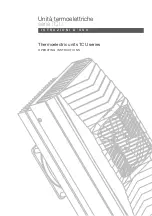
1-3
SERVICING PRECAUTIONS
CAUTION : Before servicing the COMBI HOME THEATER
SYSTEM covered by this service data and its supplements
and addends, read and follow the
SAFETY PRECAUTIONS.
NOTE
: if unforeseen circumstances create conflict between
the following servicing precautions and any of the safety pre-
cautions in this publications, always follow the safety pre-
cautions.
Remembers Safety First:
General Servicing Precautions
1. Always unplug the COMBI HOME THEATER SYSTEM AC
power cord from the AC power source before:
(1) Removing or reinstalling any component, circuit board,
module, or any other assembly.
(2) Disconnection or reconnecting any internal electrical
plug or other electrical connection.
(3) Connecting a test substitute in parallel with an elec-
trolytic capacitor.
Caution
: A wrong part substitution or incorrect
polarity installation of electrolytic capacitors may result
in an explosion hazard.
2. Do not spray chemicals on or near this COMBI HOME
THEATER SYSTEM or any of its assemblies.
3. Unless specified otherwise in this service data, clean
electrical contacts by applying an appropriate contact
cleaning solution to the contacts with a pipe cleaner,
cotton-tipped swab, or comparable soft applicator.
Unless specified otherwise in this service data, lubrication
of contacts is not required.
4. Do not defeat any plug/socket B+ voltage interlocks with
whitch instruments covered by this service manual might
be equipped.
5. Do not apply AC power to this COMBI HOME THEATER
SYSTEM and/or any of its electrical assemblies unless all
solid-state device heat sinks are cerrectly installed.
6. Always connect test instrument ground lead to the
appropriate ground before connection the test instrument
positive lead. Always remove the test instrument ground
lead last.
Insulation Checking Procedure
Disconnect the attachment plug from the AC outlet and turn
the power on. Connect an insulation resistance meter(500V)
to the blades of the attachment plug. The insulation resis-
tance between each blade of the attachment plug and acces-
sible conductive parts (Note 1) should be more than 1M-
ohm.
Note 1 :
Accessible Conductive Parts including Metal pan-
els, Input terminals, Earphone jacks, etc.
Electrostatically Sensitive (ES) Devices
Some semiconductor (solid state) devices can be damaged
easily by static electricity. Such components commonly are
called Electrostatically Sensitive (ES) Devices. Examples of
typical ES devices are integrated circuits and some field
effect transistors and semiconductor chip components.
The following techniques should be used to help reduce the
incidence of component damage caused by static electricity.
1. Immediately before handling any semiconductor compo-
nent or semiconductor-equipped assembly, drain off any
electrostatic charge on your body by touching a known
earth ground. Alternatively, obtain and wear a commer-
cially available discharging wrist strap device, which
should be removed for potential shock reasons prior to
applying power to the unit under test.
2. After removing an electrical assembly equipped with ES
devices, place the assembly on a conductive surface such
as aluminum foil, to prevent electrostatic charge buildup or
exposure of the assembly.
3. Use only a grouned-tip soldering iron to solder or unsolder
ES devices.
4. Use only an anti-static solder removal device. Some
solder removal devices not classified a “anti-static” can
generate electrical charges sufficient to damage ES
devices.
5. Do not use freon-propelled chemicals. These can
generate electrical charge sufficient to damage ES
devices.
6. Do not remove a replacement ES device from its protec
tive package until immediately before you are ready to
install it. (Most replacement ES devices are packaged with
leads electrically shorted together by conductive foam,
aluminum foil, or comparable conductive material).
7. Immediately before removing the protective material from
the leads of a replacement ES device, touch the protective
material to the chassis or circuit assembly into which the
device will be installed.
Caution : Be sure no power is applied to the chassis or
circuit, and observe all other safety precautions.
8. Minimize bodily motions when handling unpackaged
replacement ES devices. (Normally harmless motion such
as the brushing together of your clothes fabric or the lifting
of your foot from a carpeted floor can generate static elec-
tricity sufficient to damage an ES device.)
Содержание D35
Страница 10: ...951 954 960 961 953 957 959 955 956 963 2 Woofer Speaker Section DTE 5100WE Woofer Speaker Section Part List...
Страница 11: ...2 5 3 Speaker Section DTE 550TE Speaker Section Part List 850 852 851A 851 853 854 857 858...
Страница 34: ......
Страница 49: ...3 92 INTERNAL BLOCK DIAGRAM OF ICs CS8415A...
Страница 50: ......
Страница 59: ...3 38 3 39 2 POWER SMPS CIRCUIT DIAGRAM 2...
Страница 60: ...3 40 3 41 3 TU IF ACSS A2 CIRCUIT DIAGRAM EE MODE VIDEO TU MODE AUDIO...
Страница 66: ...3 52 3 53 PRINTED CIRCUIT DIAGRAMS 1 MAIN P C BOARD LOCATION GUIDE...
Страница 67: ...3 54 3 55 2 KEY RIGHT P C BOARD LOCATION GUIDE 3 KEY LEFT P C BOARD LOCATION GUIDE...
Страница 68: ......
Страница 71: ...3 72 3 73 3 MPEG CIRCUIT DIAGRAM Optical Coaxial out CVBS Y Pb Pr Componet Y C S VHS WAVEFORM...
Страница 74: ...3 78 3 79 6 JACK CIRCUIT DIAGRAM...
Страница 78: ...3 86 3 87 PRINTED CIRCUIT DIAGRAMS 1 MAIN P C BOARD TOP VIEW LOCATION GUIDE...
Страница 79: ...3 88 3 89 2 MAIN P C BOARD BOTTOM VIEW LOCATION GUIDE...
Страница 80: ......
Страница 83: ...3 97 3 98 CIRCUIT DIAGRAMS 1 AMP CIRCUIT DIAGRAMS...
Страница 84: ...2 DSP DIGITAL AUDIO PROCESSING CIRCUIT DIAGRAMS 3 99 3 100...
Страница 85: ...3 101 3 102 3 COM CIRCUIT DIAGRAMS...
Страница 86: ...PRINTED CIRCUIT DIAGRAMS 1 MAIN P C BOARD SOLDER SIDE LOCATION GUIDE 3 103 3 104...
Страница 87: ...3 105 3 106 2 MAIN P C BOARD LOCATION GUIDE...
Страница 88: ......
Страница 111: ...4 22 GEAR F R GEAR AY P2 P3 Lever F R Base Tension Boss CAM...
Страница 120: ...MEMO...
Страница 156: ......





































